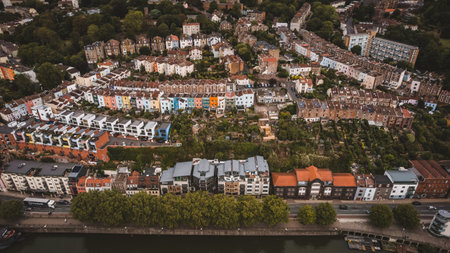1. Introduction: Setting the Scene for Regional Disparities
Access to reliable cancer cover is a cornerstone of public health and social justice within the United Kingdom. With cancer being one of the leading causes of morbidity and mortality, ensuring that everyone—regardless of where they live—can obtain comprehensive protection and support is vital. However, questions persist regarding whether residents in England, Scotland, Wales, and Northern Ireland enjoy equal opportunities when it comes to securing adequate cancer cover. Regional disparities in healthcare provision have long been a topic of debate across Britain, raising concerns about fairness and equality within the NHS framework as well as in private health insurance offerings. This introductory discussion highlights why examining differences in cancer cover availability is crucial not only for individual peace of mind but also for broader issues of public health policy, social cohesion, and reducing health inequalities across all UK nations.
2. NHS Structures and the Devolved Nations
The United Kingdom’s approach to healthcare provision is unique, especially since devolution in the late 1990s. Although the NHS brand is universal, each nation—England, Scotland, Wales, and Northern Ireland—operates its own health service with distinct policies, management systems, and funding streams. This divergence sets the stage for regional disparities in services, including cancer cover availability and insurance support.
Key Differences in NHS Structures
| Nation | Governing Body | Policy Focus | Funding Model |
|---|---|---|---|
| England | NHS England | Centrally managed; greater market involvement | Direct government funding; some private partnerships |
| Scotland | NHS Scotland | Locally managed boards; emphasis on free prescriptions and services | Block grant from UK Treasury; no prescription charges |
| Wales | NHS Wales | Community-based care; free prescriptions and more integrated social care | Block grant from UK Treasury; no prescription charges |
| Northern Ireland | Health and Social Care (HSC) | Integrated health and social care system; slower reform pace due to political challenges | Block grant from UK Treasury; no prescription charges |
The Impact on Cancer Cover Availability
The structural differences between these health systems mean that access to cancer diagnostics, treatments, and support can vary considerably depending on where a patient lives. For example, the prioritisation of certain drugs or screening programmes may differ, with some medications or therapies being available sooner—or exclusively—in one nation over another. This variation has direct implications for insurance policies: what an insurer covers in one part of the UK might not match what is covered elsewhere. Understanding these structural nuances is crucial when assessing whether cancer cover truly offers equal protection across the four nations.

3. Current State of Cancer Cover Across Regions
Examining the present landscape of cancer insurance across England, Scotland, Wales, and Northern Ireland reveals notable regional disparities in both availability and scope. In England, a wider range of cancer cover products is typically on offer, owing in part to a larger market and greater competition among insurers. Many policies here are comprehensive, often including access to experimental treatments or newer cancer drugs that might not be routinely available on the NHS.
Scotland’s insurance market, while robust, tends to reflect unique policy initiatives from Holyrood. Scottish residents may benefit from specific regional schemes or collaborations between public health bodies and insurers aimed at improving early diagnosis and care pathways. However, these can sometimes result in a narrower choice of private cancer cover compared to England, particularly in more rural areas where provider reach is limited.
Wales faces its own challenges: although basic cancer cover is widely accessible, policyholders frequently report limitations regarding the scope of treatment options and speed of claims processing. Regional insurers are sometimes less able to offer the breadth of services found elsewhere due to smaller economies of scale and differing health priorities set by the Welsh Government.
Northern Ireland presents perhaps the most pronounced disparity. The region’s smaller population and unique healthcare governance can restrict both the number and variety of cancer insurance policies available. Residents may encounter longer waiting times for certain types of cover or face higher premiums due to perceived risk and limited provider competition.
Recent policy reports highlight that while all four nations have made strides toward improving cancer outcomes, access to private cancer insurance remains uneven. Industry data suggests that cross-border cooperation and harmonisation of standards could help address these gaps, but as it stands, your postcode still heavily influences what level of cancer cover you can secure.
4. Access Barriers and Socioeconomic Influences
Regional disparities in cancer cover availability are not only a matter of policy or service provision but are also deeply shaped by socioeconomic factors, rurality, and other localised influences. Individuals across England, Scotland, Wales, and Northern Ireland encounter varying degrees of difficulty when seeking comprehensive cancer insurance, often due to where they live or their economic circumstances.
Socioeconomic Status and Its Impact
Socioeconomic status remains a primary determinant of access to cancer cover. Households with lower income, limited educational attainment, or precarious employment tend to face higher premiums, more exclusions, or outright denial of cover. In some regions—particularly those with histories of industrial decline or high unemployment—these barriers become even more pronounced. The table below illustrates typical scenarios encountered across the UK nations:
| Nation/Region | Common Socioeconomic Barriers | Impact on Cancer Cover Availability |
|---|---|---|
| England (Urban) | Income disparity, housing costs | Moderate; broader provider choice but higher cost for low-income groups |
| Scotland (Rural Highlands) | Limited job opportunities, ageing population | Significant; fewer providers, stricter eligibility criteria |
| Wales (Valleys) | Pockets of deprivation, legacy health issues from industry | High; increased rates of exclusions or loading premiums |
| Northern Ireland (Border Areas) | Lack of local providers, economic uncertainty post-Brexit | Acute; few tailored products and frequent application rejections |
Rurality: The Urban-Rural Divide
The urban-rural divide significantly affects cancer cover accessibility. Urban centres such as London, Manchester, Glasgow, and Cardiff generally offer a wider range of providers and more competitive premiums due to market competition. In contrast, rural communities—from the Scottish Highlands to parts of mid-Wales—often have limited provider presence and may be subject to less favourable terms or outright lack of certain policies.
Other Regional Factors at Play
Bespoke regional challenges further complicate access. For instance, linguistic barriers in Welsh-speaking areas can hinder understanding of policy documents. In Northern Ireland, cross-border healthcare arrangements add complexity to policy underwriting. Furthermore, cultural attitudes towards insurance and cancer itself can influence uptake rates—some communities remain hesitant to engage with insurers due to mistrust or stigma.
Towards Greater Equity in Access
Addressing these multifaceted barriers requires coordinated efforts among insurers, policymakers, and local support organisations. Without targeted interventions—such as tailored outreach programmes or region-specific product development—the gap in cancer cover availability will persist across the UKs diverse regions.
5. The Human Impact: Patient Stories and Statistics
Highlighting Real Lives Behind the Numbers
Regional disparities in cancer cover are not just abstract policy issues—they have profound effects on individuals and families across the UK. By examining short case studies and referencing up-to-date statistics, we can better understand how unequal access to cancer cover impacts real people living in England, Scotland, Wales, and Northern Ireland.
Case Study 1: Access Delays in Rural Wales
Consider the story of Bethan, a 47-year-old from rural Powys, Wales. After receiving a breast cancer diagnosis, Bethan discovered that her local NHS trust offered fewer support services compared to neighbouring English regions. Waiting times for treatment were longer, and she had limited options for specialist care. Bethans experience is mirrored by data from Cancer Research UK, which shows that Welsh patients wait an average of 7 days longer for initial treatment compared to their counterparts in London.
Case Study 2: Financial Stress in Northern Ireland
In Belfast, Mark, a 52-year-old father of two, faced significant financial strain following his bowel cancer diagnosis. Unlike some regions in England where comprehensive cancer cover includes transport and accommodation assistance for those travelling long distances for treatment, Mark found there were fewer financial safety nets available locally. According to Macmillan Cancer Support, over 60% of cancer patients in Northern Ireland report money worries exacerbated by regional gaps in cover.
Statistical Overview: The Scale of Disparity
The impact of these regional differences is starkly reflected in national statistics. The Office for National Statistics reports that five-year survival rates for certain cancers are up to 8% lower in deprived areas of Scotland compared with more affluent parts of South East England. Meanwhile, the proportion of patients receiving timely access to new cancer drugs is significantly higher in Greater Manchester than in North East England or parts of Wales.
The Consequences Beyond Healthcare
The human cost extends beyond medical outcomes. Families in regions with limited cancer cover often face increased travel times, higher out-of-pocket expenses, and emotional stress due to uncertainty around available support. These stories and numbers collectively highlight the urgent need for more equitable provision of cancer cover across the four nations of the UK.
6. Policy Solutions and Future Directions
The persistent regional disparities in cancer cover across England, Scotland, Wales, and Northern Ireland have brought the need for targeted policy solutions into sharp focus. While some progress has been made through national initiatives such as the NHS Long Term Plan—which aims to improve early cancer diagnosis and survival rates—there remains significant scope for improvement in how these policies translate to equitable insurance cover across all regions.
Ongoing Initiatives at National Level
At the national level, the UK Government and devolved administrations have begun to address these disparities through enhanced funding allocations and specific cancer strategies tailored to each nation’s needs. For example, Scotland’s Cancer Recovery Plan and Wales’ Cancer Delivery Plan both seek to close gaps in access and outcomes. However, these efforts often focus more on treatment pathways within the NHS than on private cancer cover or insurance products, which remain less regulated and thus more variable across regions.
Proposals for Improving Access
Several proposals have emerged from both public consultations and third sector organisations. These include standardising minimum coverage levels for critical illness insurance across the UK, incentivising insurers to provide equal access regardless of postcode, and establishing clearer regulatory guidelines through bodies such as the Financial Conduct Authority (FCA). Enhanced public awareness campaigns about available options, particularly in underserved rural or deprived areas, are also seen as a means of empowering individuals to make informed choices.
Localised Approaches: Bridging Community Gaps
On the local level, integrated care systems (ICSs) in England and community health boards in Scotland and Wales can play a crucial role by identifying specific regional barriers to cancer cover uptake. Local authorities might collaborate with charities, employers, and financial advisers to develop tailored information sessions or subsidised insurance schemes targeting populations with historically lower coverage rates. Sharing best practices between regions could further help reduce inequalities.
Looking Ahead: A Holistic Vision
Ultimately, reducing regional disparities in cancer cover will require a coordinated approach that bridges policy at both national and local levels. Continued investment in data collection is essential for understanding where gaps persist and measuring the effectiveness of interventions over time. The integration of social care considerations into insurance design—recognising the broader social determinants of health—could be transformative. As political momentum builds around ‘levelling up’ across the UK, there is an opportunity for policymakers, insurers, healthcare professionals, and communities to work together toward a future where access to adequate cancer cover is not dictated by geography.


